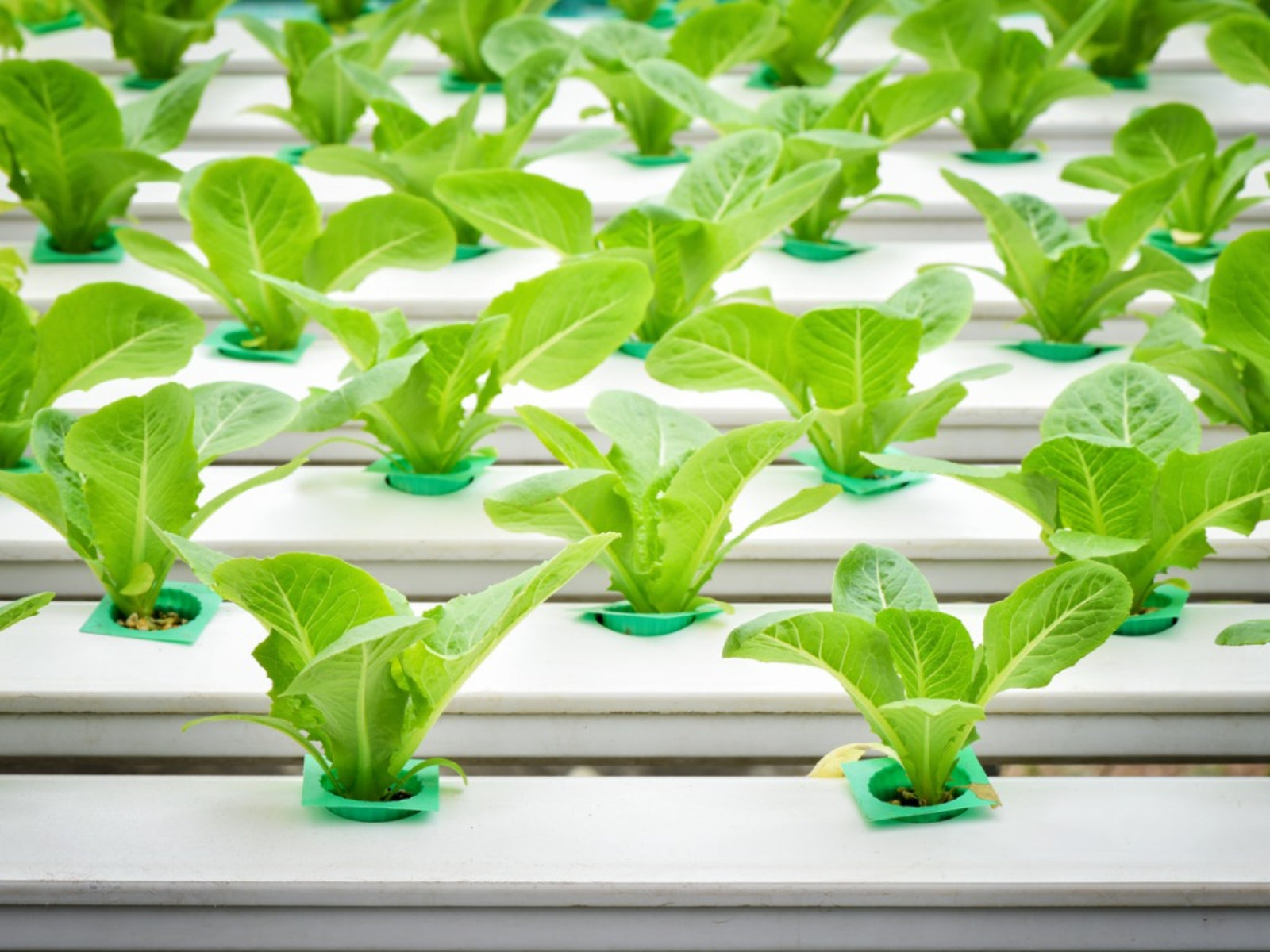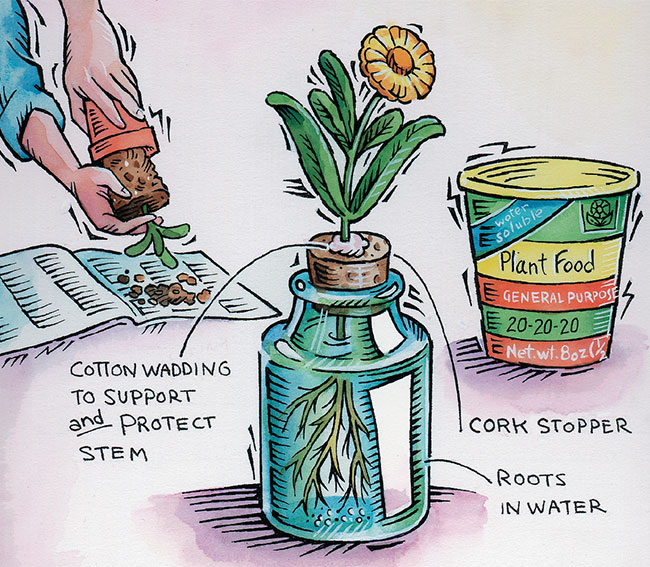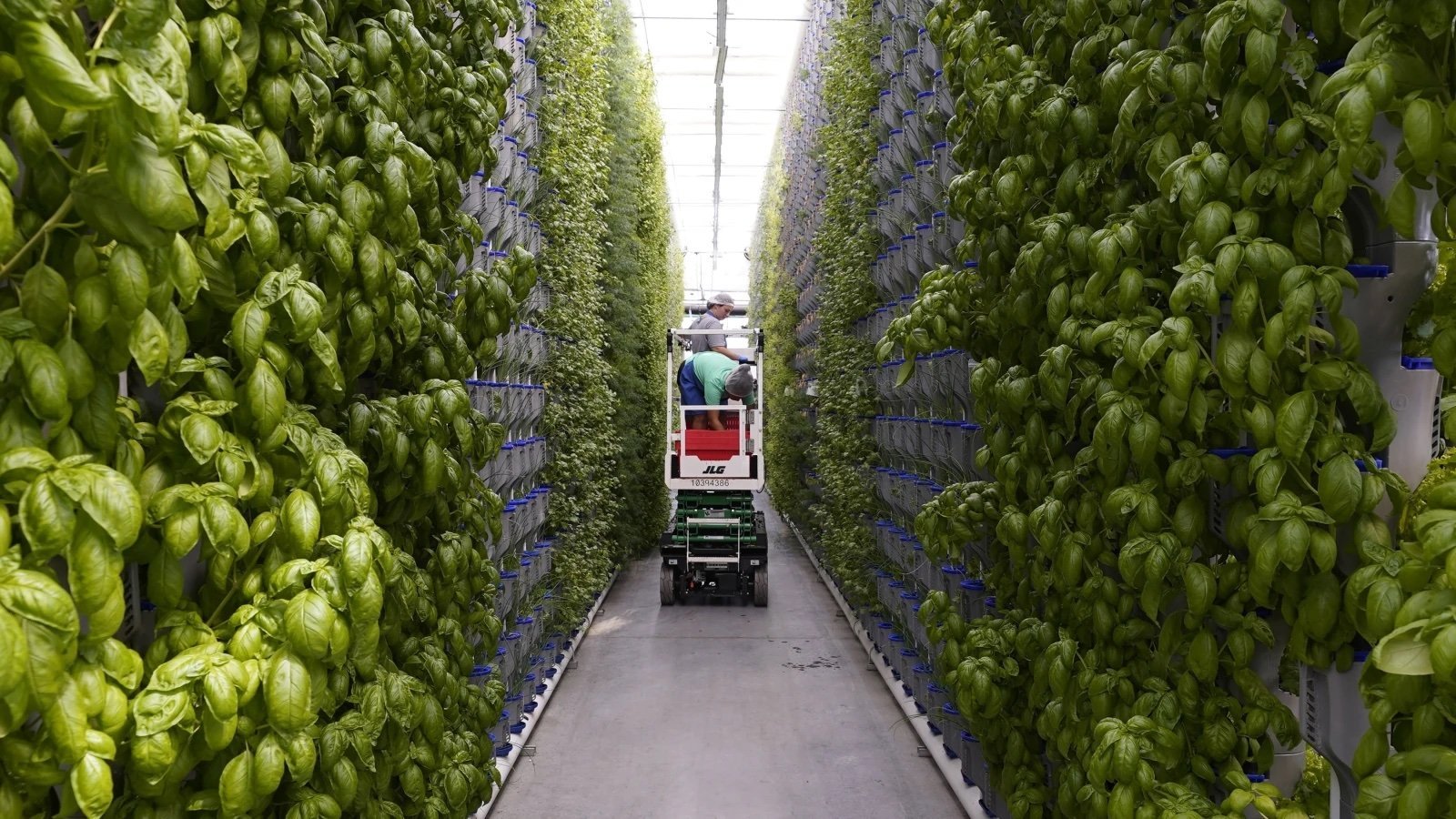Yes, hydroponic plants can grow without soil. Instead of soil, they use nutrient-rich water solutions.
This method is highly efficient and sustainable. Hydroponics is revolutionizing modern agriculture. With increasing urbanization and shrinking arable land, this soilless technique offers a viable solution. Hydroponic systems provide plants with essential nutrients directly through water, ensuring faster growth and higher yields.
This technique also conserves water and reduces the need for pesticides. By eliminating soil, hydroponics minimizes the risk of soil-borne diseases. It allows for precise control over nutrient delivery, leading to healthier plants. As more people seek sustainable and efficient gardening methods, hydroponics is gaining popularity. Understanding how these systems work can help you decide if they’re right for your gardening needs.
Introduction To Hydroponics
Hydroponics offers a unique way to grow plants without soil. This method uses water, nutrients, and a growing medium to support the plants. It presents an efficient and sustainable option for plant cultivation.
What Is Hydroponics?
Hydroponics is a method of growing plants using water, nutrients, and a growing medium. It skips the need for soil entirely. The plant roots are submerged in a nutrient-rich solution, providing all the essential elements for growth.
This method ensures plants receive the exact amount of nutrients they need. The plants can grow faster and healthier. It also uses less water than traditional soil-based gardening.
History Of Hydroponics
The concept of hydroponics dates back to ancient civilizations. The Hanging Gardens of Babylon might be an early example. In the 17th century, scientists began to understand how plants absorb nutrients from water.
By the 20th century, researchers developed modern hydroponic techniques. NASA even used hydroponics to grow plants in space. Today, hydroponics is popular among gardeners and farmers worldwide.

Credit: www.ugaoo.com
How Hydroponic Systems Work
Hydroponic systems allow plants to grow without soil. These systems use nutrient-rich water to nourish the plants. Roots absorb the nutrients directly from the water, promoting healthy growth.
Hydroponic systems allow plants to grow without soil. This method uses a nutrient-rich water solution. The roots of the plants sit directly in this solution. Let’s explore the basic principles and types of systems used in hydroponics.Basic Principles
Hydroponics relies on water, nutrients, and light. Plants need these three things to grow. In traditional farming, soil provides nutrients. In hydroponics, the nutrient solution replaces the soil. The water delivers nutrients directly to the plant roots. This makes the process efficient and fast. Light is also crucial. Plants use light to make food through photosynthesis. Hydroponic systems often use artificial lights. These lights mimic the sun. They give plants the energy they need to grow strong and healthy.Types Of Systems
There are different types of hydroponic systems. Each has its own method of delivering nutrients and water. One common type is the Wick System. It uses a wick to draw water and nutrients to the plant roots. This method is simple and needs no pumps. Another type is the Deep Water Culture (DWC) system. In this system, plant roots float in a nutrient solution. An air pump provides oxygen to the roots. This helps them grow faster. The Nutrient Film Technique (NFT) is also popular. In NFT systems, a thin film of nutrient solution flows over the roots. This method is efficient and uses less water. Each system has its own benefits. Choosing the right one depends on your needs. With hydroponics, you can grow fresh plants anywhere, even indoors. This makes it a great option for urban gardening. “`Nutrient Solutions
Hydroponic gardening is a fascinating way to grow plants. Plants can flourish without soil. This method relies heavily on nutrient solutions. These solutions provide essential minerals and nutrients. They help plants grow healthy and strong.
Importance Of Nutrients
Nutrients are vital for plant growth. In soil, plants get nutrients naturally. But in hydroponics, you must provide these nutrients. The right balance of nutrients ensures plant health. Nutrients like nitrogen, potassium, and phosphorus are crucial. They support root development, leaf growth, and flower production.
How To Prepare Solutions
Creating nutrient solutions is simple. Start with clean, filtered water. Add hydroponic nutrient mix to the water. Follow the instructions on the package for the right amount. Stir the solution well to dissolve the nutrients.
Check the pH level of the solution. The ideal pH for most plants is between 5.5 and 6.5. Adjust the pH if needed using pH up or pH down solutions. Regularly monitor the nutrient levels. This ensures plants get a balanced diet.
Plant Growth Without Soil
Plant growth without soil might seem strange to many. Traditional gardening relies on soil for nutrients and support. But hydroponics changes this perspective. It shows that plants can thrive without soil. Instead, they grow in a nutrient-rich solution. This method offers many benefits and has become popular among gardeners.
Role Of Growing Mediums
Growing mediums play a crucial role in hydroponics. They provide support to plant roots. They also help retain moisture and nutrients. Without soil, plants need something to anchor them. Growing mediums ensure stability. They also help distribute nutrients evenly. This creates an ideal environment for plant growth.
Common Mediums Used
Several mediums are popular in hydroponic gardening. Each offers unique benefits. Rockwool is a favorite. It retains water well and provides good aeration. Another common medium is perlite. It is lightweight and improves drainage. Coconut coir is also used. It is sustainable and holds moisture effectively.
Other mediums include clay pellets. They are reusable and provide excellent support. Vermiculite is another option. It holds water and nutrients well. Each medium has its pros and cons. The choice depends on the plant type and hydroponic system.
Advantages Of Hydroponics
Hydroponics offers numerous benefits that make it an attractive option for growing plants. This method of cultivation eliminates the need for soil, making it a cleaner and more efficient way to grow various plants. Let’s explore some of the key advantages of hydroponics.
Faster Growth
One of the most significant advantages of hydroponics is the faster growth rates of plants. In hydroponic systems, plants receive a nutrient-rich solution directly to their roots. This ensures they get the right amount of nutrients at all times.
Traditional soil gardening can sometimes be less efficient in nutrient delivery. Plants in hydroponic systems can grow up to 50% faster compared to those in soil. This is because the roots have access to oxygen and nutrients more easily. This results in quicker and healthier plant growth.
Water Efficiency
Hydroponic systems are highly water-efficient. Water is recirculated through the system, reducing waste. This is a stark contrast to traditional farming, where a significant amount of water is lost due to evaporation and runoff.
In hydroponics, plants use only about 10% of the water compared to traditional soil methods. This makes it an excellent choice for areas with water scarcity. The controlled environment also means that plants can thrive with minimal water usage.
| Aspect | Hydroponics | Traditional Soil |
|---|---|---|
| Growth Rate | Up to 50% Faster | Standard |
| Water Usage | 10% of Traditional | High |
| Nutrient Delivery | Direct and Efficient | Variable |

Credit: scoutlife.org
Challenges And Solutions
Growing hydroponic plants without soil can be a rewarding challenge. This innovative method allows plants to grow in a nutrient-rich water solution. Yet, it comes with its own set of issues. Let’s explore the potential problems and how to solve them.
Potential Problems
Hydroponic systems face some common issues. Nutrient imbalances can stunt plant growth. Water quality is another concern. Poor water can harm plants. Additionally, diseases and pests can affect plants even in a soil-free environment.
| Problem | Impact |
|---|---|
| Nutrient Imbalance | Stunted growth and poor yield |
| Poor Water Quality | Plant stress and health issues |
| Disease and Pests | Plant damage and loss |
Troubleshooting Tips
Addressing these problems involves a few key steps. First, monitor nutrient levels regularly. Use a balanced nutrient solution to avoid deficiencies. Second, ensure the water you use is clean. Filter it if necessary. Finally, keep an eye out for signs of disease or pests. Remove affected plants promptly to prevent spread.
- Monitor Nutrient Levels: Check and adjust nutrient solutions weekly.
- Ensure Water Quality: Use a water filter to keep water pure.
- Watch for Disease: Inspect plants regularly for signs of trouble.
By following these tips, you can overcome the challenges of growing hydroponic plants without soil. Happy growing!
Popular Plants For Hydroponics
Hydroponic gardening is an innovative way to grow plants without soil. This method uses a nutrient-rich water solution to feed plants directly. Many people are curious about which plants thrive in a hydroponic system. Let’s explore some popular choices for hydroponic gardening.
Vegetables
Vegetables are a favorite for hydroponic gardens. Leafy greens like lettuce and spinach grow quickly and easily. These plants love the consistent nutrients and water. Tomatoes also do well in hydroponic systems. They produce juicy fruits with the right care. Cucumbers are another popular choice. They need support as they grow, but the results are worth it.
Herbs
Herbs are perfect for hydroponics. Basil grows fast and can be harvested often. Mint spreads quickly and thrives in water. Oregano and thyme also do well in hydroponic gardens. These herbs add fresh flavors to meals. They are easy to grow and maintain.
Fruits
Fruits can be grown hydroponically too. Strawberries are a top choice. They produce sweet, delicious berries. Blueberries can also be grown in a hydroponic system. They need a specific pH level to thrive. Some people even grow small citrus trees hydroponically. These trees need more space but can produce lovely fruits.
Future Of Hydroponic Farming
The future of hydroponic farming is bright and promising. As technology advances, so do the methods of growing plants without soil. Hydroponics has the potential to revolutionize agriculture. Farmers can now grow crops in urban areas. They can use less water and space. This method could solve many food production problems. It offers a sustainable solution for the growing population.
Technological Innovations
New technologies are making hydroponic farming more efficient. Automated systems can monitor and control plant growth. Sensors track nutrient levels and adjust them automatically. LED lights provide the perfect amount of light. These innovations help plants grow faster and healthier. Farmers can produce more crops with less effort.
Sustainability Impact
Hydroponic farming is more sustainable than traditional farming. It uses up to 90% less water. There is no need for pesticides or herbicides. This method reduces the carbon footprint. It also saves land. No soil means no soil degradation. Hydroponic systems can be set up anywhere. Even in deserts or urban rooftops. This makes fresh produce accessible to more people.
:max_bytes(150000):strip_icc()/hydroponic-plants-2000-3559e1ef9ea0471a8d6ee206bc493716.jpg)
Credit: www.realsimple.com
Frequently Asked Questions
What Is Hydroponics?
Hydroponics is a method of growing plants without soil. It uses nutrient-rich water instead. This method allows plants to grow faster and more efficiently. It’s a popular technique for indoor and urban gardening.
Can Plants Grow Without Soil?
Yes, plants can grow without soil using hydroponics. In this method, plants receive nutrients from a water-based solution. This allows them to thrive and grow quickly, even in small spaces.
What Are The Benefits Of Hydroponics?
Hydroponics offers numerous benefits. It saves water, requires less space, and allows for faster plant growth. Additionally, it reduces the risk of soil-borne diseases and pests.
How Do Hydroponic Systems Work?
Hydroponic systems deliver nutrients directly to plant roots. They use a nutrient-rich water solution and often include a growing medium. This setup ensures plants receive everything they need to thrive.
Conclusion
Hydroponic plants can thrive without soil. They get nutrients from water solutions. This method saves space and water. It is ideal for urban gardening. Hydroponics allows for year-round growth. It reduces pests and soil-borne diseases. Beginners can start small and expand gradually.
Success depends on proper care and monitoring. With hydroponics, fresh produce is always within reach. Embrace this soil-free technique and enjoy gardening benefits.





